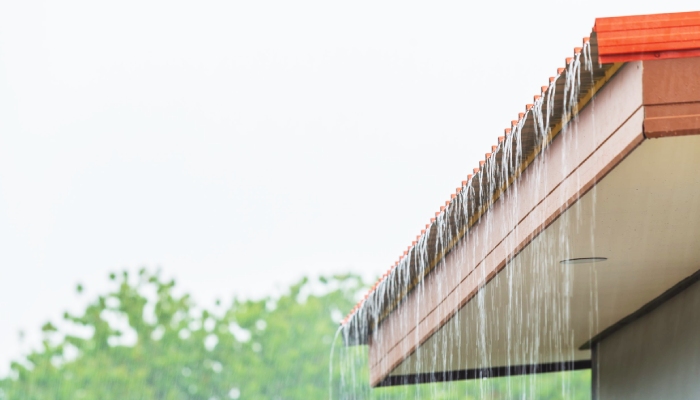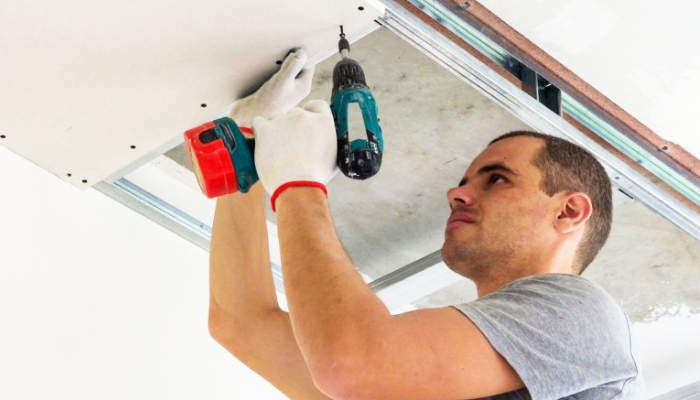Heavy rainfall can put any home to the test, especially when it comes to roof repairs and the integrity of ceilings. While some signs may seem small like a faint stain or a slight bulge what appears to be minor ceiling water damage can often point to a much larger problem beneath the surface. Water has a way of spreading quietly, soaking into plaster, insulation, and timber structures before any major signs become visible.
Unfortunately, many homeowners overlook these early indicators, assuming the damage is cosmetic or insignificant. In reality, the importance of timely repairs is highlighted as delaying them can lead to mould growth, structural weakness, and even safety hazards, especially if electrical components are involved. Acting promptly after heavy rain is key to preventing long-term damage and maintaining the safety and value of your home. In this article, we’ll explore why timely ceiling repairs are essential and how taking the right steps early can save you time, money, and stress in the long run.
Understanding the Impact of Heavy Rain on Ceilings
Heavy rain can expose weaknesses in your home’s exterior, particularly the roof and upper wall areas, often revealing issues related to storm damage . When water finds its way through worn roofing materials, cracked tiles, or damaged flashing, it can begin to pool above the ceiling. Over time, this moisture seeps into the ceiling structure, compromising both its appearance and its integrity.
Ceilings are especially vulnerable because they’re often made from materials like plasterboard or gyprock, which absorb water quickly and lose their strength when wet. Even minor leaks can lead to sagging, discolouration, and bubbling surfaces. In more severe cases, storm damage repairs become necessary as ongoing exposure to water can cause sections of the ceiling to collapse or develop mould, creating not just structural issues but potential health risks as well.
Understanding how rainwater affects ceilings helps highlight the importance of acting quickly. Whether it’s a small, barely visible patch or more obvious damage, taking prompt steps can prevent the situation from escalating and affecting other areas of your home.

Common Signs of Water Damage You Shouldn’t Ignore
Ceiling damage caused by water doesn’t always appear suddenly. In many cases, it begins with subtle signs like water stains that can be easy to overlook. However, recognising these early indicators is crucial to preventing further deterioration.
One of the first things homeowners may notice is a change in colour often a yellow or brown stain forming on the ceiling surface. Over time, the affected area may start to expand, with paint peeling or bubbling and plaster starting to soften. In some cases, the ceiling may sag or show visible bulges, which indicate that water is accumulating above and the structure is under strain.
Other warning signs include a persistent musty smell, which could point to mould growth, or damp patches that feel cool or moist to the touch. Even if the damage appears limited or you suspect it’s just minor ceiling water damage, it’s best not to wait. Small issues can quickly turn into major problems without early intervention.
The Hidden Risks of Delayed Repairs
Delaying ceiling repairs after water damage no matter how minor it seems can lead to serious and costly consequences. Water doesn’t stay in one place. It spreads silently, soaking into insulation, timber framing, and adjacent walls. What begins as a small damp spot can compromise the ceiling’s structural integrity, potentially increasing repair costs and extending far beyond the original leak.
One of the biggest hidden dangers is mould. Moist, enclosed areas provide the perfect environment for mould and mildew to grow, which can impact indoor air quality and pose health risks, especially for people with respiratory conditions. Additionally, if water reaches electrical wiring or fixtures, it can increase the risk of short circuits or fire hazards.
Structural damage is another concern. As plasterboard weakens and wood swells or rots, ceilings may begin to sag or even collapse in severe cases. These problems become much more expensive to fix if left untreated. Prompt repairs can prevent escalation, protect your property, and save you from more extensive restoration later on.

How Professional Repairs Protect Your Property
When it comes to water-damaged ceilings, professional repairs offer far more than just cosmetic improvement. A qualified team will begin with a thorough inspection to identify not only the visible damage but also any hidden moisture or structural concerns. This detailed assessment is essential to ensuring that no underlying issues are missed.
Professionals use the right tools, materials, and techniques to restore your ceiling safely and effectively. Damaged sections are removed and replaced with durable materials that match the original finish, while any wet insulation or framing is properly dried or replaced. This comprehensive approach helps prevent future issues like mould regrowth, recurring leaks, or ongoing structural stress, while also contributing to overall energy efficiency .
By trusting experienced tradespeople, you ensure that the job is done right the first time. Their attention to detail and understanding of local building standards mean your ceiling won’t just look good it will be safe, strong, and built to last.
Preventing Future Water Damage
Once ceiling repairs are complete, the next important step is preventing the problem from recurring. Water damage is often a symptom of a larger issue such as roof leaks, blocked gutters, or poor ventilation. Addressing these causes early can save you from future repairs and additional stress, ensuring you have a well maintained roof .
Start by scheduling regular roof inspections, especially after heavy storms. Cracked or missing tiles, damaged flashing, or debris buildup in gutters can all allow water to enter your ceiling space. Keeping gutters and downpipes clear ensures rainwater is directed away from your home, reducing the risk of overflow and seepage.
It’s also wise to monitor indoor humidity levels and ensure there is adequate ventilation in roof cavities and ceiling spaces. Moist environments can encourage condensation and dampness, even without a direct leak. Preventative maintenance, combined with prompt action when issues arise, is the best way to protect your ceiling and preserve your home’s structural integrity.

Choose Trusted Experts for Ceiling Repairs
When dealing with ceiling water damage, choosing the right professionals can make all the difference. A skilled team will not only repair the visible damage but also conduct a thorough assessment to identify underlying causes such as roof leaks or missing shingles that may lead to further damage if left unchecked. This comprehensive approach ensures a lasting and effective solution.
Trusted experts bring the right experience, high-quality materials, and attention to detail to every job. They understand the importance of both structural integrity and a clean, seamless finish. By addressing problems early and providing timely roof repairs, professionals help homeowners avoid costly repairs that often arise from delayed maintenance.
Whether the issue seems minor or more serious, working with qualified tradespeople ensures that necessary repairs are completed properly. Their expertise helps maintain your home’s safety and value, giving you peace of mind and long-term protection from future water-related issues.
Conclusion
Ceiling damage after heavy rain should never be ignored, no matter how small it may appear at first. What seems like a minor ceiling water damage issue can quickly evolve into a larger problem, especially if caused by underlying issues like missing shingles or blocked drainage systems. Left untreated, these issues can compromise your home’s structure, safety, and even its overall property value.
Regular roof inspections are essential for spotting early signs of trouble and making the necessary repairs before they lead to ceiling damage. Addressing roof repairs promptly not only helps protect your ceiling but also prevents further deterioration that could spread to walls, insulation, or electrical systems.
By recognising the warning signs and seeking help from trusted professionals, you can restore your ceiling to its proper condition and reduce the risk of future water issues. Investing in professional repairs today is a proactive step toward maintaining a safe, dry, and secure home tomorrow.

